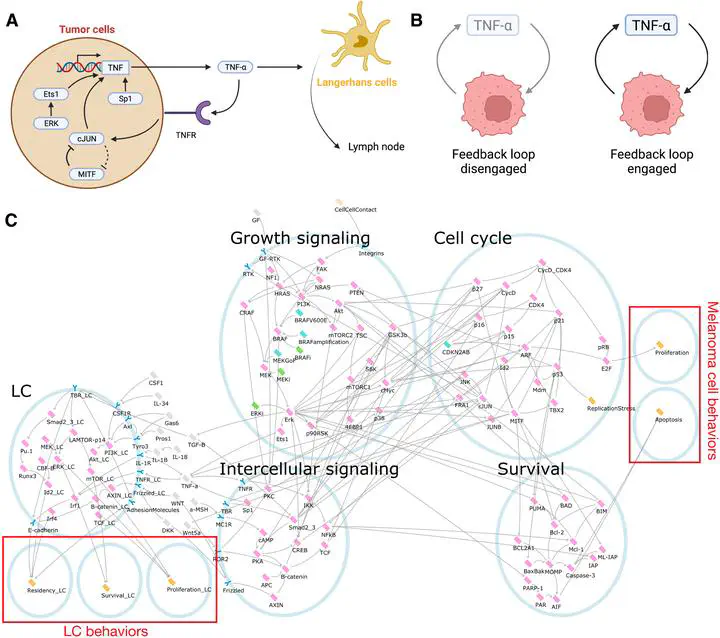Localized immune surveillance of primary melanoma in the skin deciphered through executable modeling
 CC-BY 4.0
CC-BY 4.0
Abstract
While skin is a site of active immune surveillance, primary melanomas often escape detection. Here, we have developed an in silico model to determine the local cross-talk between melanomas and Langerhans cells (LCs), the primary antigen-presenting cells at the site of melanoma development. The model predicts that melanomas fail to activate LC migration to lymph nodes until tumors reach a critical size, which is determined by a positive TNF-α feedback loop within melanomas, in line with our observations of murine tumors. In silico drug screening, supported by subsequent experimental testing, shows that treatment of primary tumors with MAPK pathway inhibitors may further prevent LC migration. In addition, our in silico model predicts treatment combinations that bypass LC dysfunction. In conclusion, our combined approach of in silico and in vivo studies suggests a molecular mechanism that explains how early melanomas develop under the radar of immune surveillance by LC.
Image credit: Adapted from Howell & Davies et al., Science Advances 2023. CC-BY 4.0